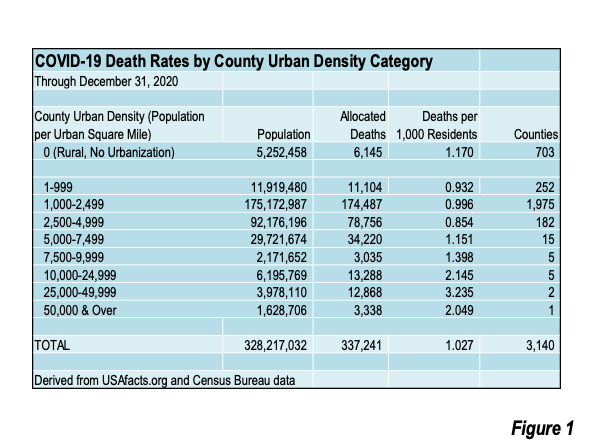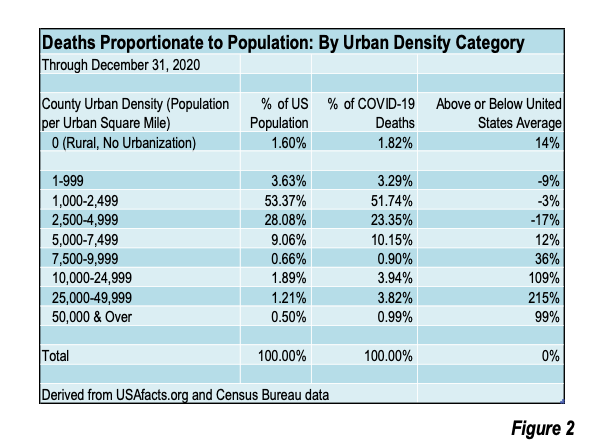The latest death rates from COVID-19 are displayed by county urban density in Figure 1. Death rates remain at or below the national death rate in counties with urban densities of 5,000 per square mile or below (Figure 2). These counties have low to medium urban population densities characteristic of suburban and exurban areas and account for 85% of the nation’s population (279 million out of a total population of 328 million). All categories of counties with urban densities exceeding 5,000 per square mile have more than their population proportionate share of COVID-19 deaths. Counties without urbanization (fully rural counties) also have higher proportional death rates (Figure 3).



Higher COVID-19 death rates are associated with higher urban densities because of the overcrowding that often occurs in such environments. This leads to higher exposure densities, because the intensity and duration of risky contacts is likely to be greater.
Similar relationships are evident elsewhere, such as in the United Kingdom and Japan.
Wendell Cox is principal of Demographia, an international public policy firm located in the St. Louis metropolitan area. He is a founding senior fellow at the Urban Reform Institute, Houston and a member of the Advisory Board of the Center for Demographics and Policy at Chapman University in Orange, California. He has served as a visiting professor at the Conservatoire National des Arts et Metiers in Paris. His principal interests are economics, poverty alleviation, demographics, urban policy and transport. He is co-author of the annual Demographia International Housing Affordability Survey and author of Demographia World Urban Areas.
Mayor Tom Bradley appointed him to three terms on the Los Angeles County Transportation Commission (1977-1985) and Speaker of the House Newt Gingrich appointed him to the Amtrak Reform Council, to complete the unexpired term of New Jersey Governor Christine Todd Whitman (1999-2002). He is author of War on the Dream: How Anti-Sprawl Policy Threatens the Quality of Life and Toward More Prosperous Cities: A Framing Essay on Urban Areas, Transport, Planning and the Dimensions of Sustainability.












